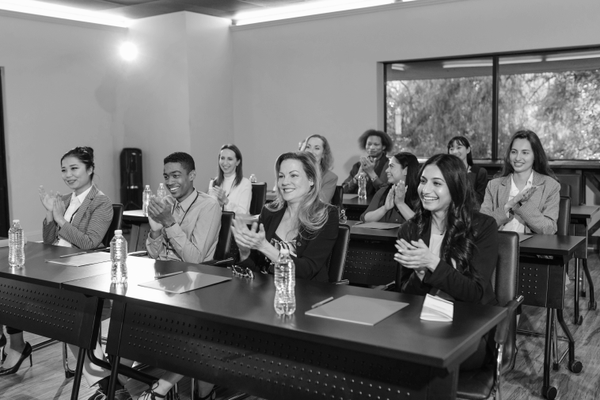
Introduction
Imagine walking into a meeting room where the tension is palpable, despite no words being spoken yet. Non-verbal communication — encompassing body language, eye contact, and tone of voice — can profoundly influence the atmosphere and outcomes of business meetings. This comprehensive guide delves into the nuanced world of non-verbal cues and offers strategies to harness their power for more effective and engaging meetings.
Understanding Non-Verbal Communication

Non-verbal communication involves the transmission of messages without the use of spoken words. It includes facial expressions, gestures, posture, tone of voice, and eye contact. Each of these components plays a vital role in conveying attitudes and emotions, which can significantly impact group dynamics during meetings.
Body Language: Silent Statements
Body language is one of the most powerful forms of non-verbal communication. It includes gestures, movements, and postures that express our feelings and attitudes. For instance, an upright posture can signify attentiveness and interest, while a slumped posture might suggest disinterest or fatigue.
In-depth Analysis: A 2018 study published in the "Journal of Business Psychology" demonstrated that participants who adopted an open posture were perceived as more persuasive and confident during presentations. This suggests that conscious adjustments to our body language can enhance the persuasive power of our verbal communication in meetings.
Eye Contact: The Window to Engagement
Eye contact plays a crucial role in establishing trust and connection. It can signal confidence, honesty, and engagement. Maintaining balanced eye contact (neither too little nor too excessive) helps keep the audience engaged and shows respect for speakers and listeners alike.
Research Insight: Psychologists at Harvard University have found that appropriate eye contact increases the perception of a speaker's credibility and can make communication more effective by affirming the listener's involvement and interest.
Tone of Voice: More Than Just Words
The tone of voice conveys emotions and reinforces the meaning behind words. It can affect the clarity and impact of the communication in meetings. A supportive and steady tone can foster a positive atmosphere, while a sharp or inconsistent tone may create unease or confusion.
Practical Example: During a critical negotiation, a calm and controlled tone of voice can help de-escalate tensions and facilitate a more productive dialogue compared to a confrontational or aggressive tone.
Strategic Application in Meetings

To leverage non-verbal communication effectively, meeting leaders and participants should be aware of both their own cues and how to read those of others. Here are strategies to enhance non-verbal communication skills:
Pre-Meeting Setup
The setup of the meeting room can influence the non-verbal dynamics among participants. For example, arranging seats in a circle or around a round table can promote equality and openness, encouraging more free-flowing and collaborative communication.
Cultivating Positive Body Language
Encourage participants to adopt positive body language:
- Nodding to show agreement or understanding.
- Smiling to convey friendliness and openness.
- Leaning forward slightly to show interest and engagement.
These simple gestures can create a more welcoming and collaborative meeting environment.
Balancing Eye Contact
Effective use of eye contact involves balancing the gaze among all meeting participants, ensuring that each person feels acknowledged. This balance helps in managing group dynamics and enhancing participation.
Modulating Tone of Voice
Varying the pitch, pace, and volume of speech can help maintain the audience's interest and convey messages more effectively. For instance, slowing down the pace when discussing complex issues can aid understanding.
Training and Development

Organizations can greatly benefit from training employees in non-verbal communication techniques. Such training can include:
- Workshops on body language and its impact on communication.
- Role-playing sessions to practice and receive feedback on non-verbal skills.
- Video reviews of meetings to analyze and improve non-verbal cues.
Monitoring and Feedback

Implement mechanisms to monitor and provide feedback on non-verbal communication:
- Anonymous feedback forms post-meeting can help gather insights on participants' perceptions of the communication dynamics.
- One-on-one coaching sessions for individuals who might benefit from personalized guidance on their non-verbal communication skills.
Conclusion

Mastering non-verbal communication can transform routine meetings into dynamic sessions of effective collaboration and decision-making. By understanding and strategically applying body language, eye contact, and tone of voice, professionals can enhance their communicative effectiveness, ensuring that their meetings are not only productive but also conducive to building stronger relationships and achieving business objectives.
Action Steps: Begin by observing the non-verbal cues in your next meeting. Note which behaviors correlate with positive responses and which might be hindering communication. Consider incorporating non-verbal communication training into your professional development programs to enhance your team's meeting efficacy.
Engage with us through comments or on social media to share your experiences or get more tips on using non-verbal communication effectively in your meetings.
